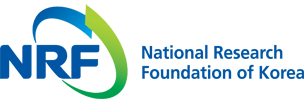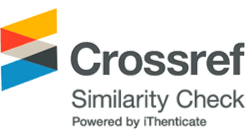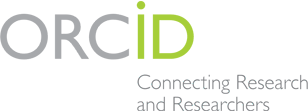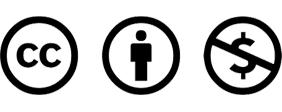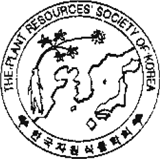Research Article
Bah, A. and I. Vergne. 2017. Macrophage autophagy and bacterial infections. Front. Immunol. 8:1483.
10.3389/fimmu.2017.0148329163544PMC5681717Chou, Y.J., C.C. Lin, I. Dzhagalov, N.J. Chen, C.H. Lin, C.C. Lin, S.T. Chen, K.H. Chen, and S.L. Fu. 2020. Vaccine adjuvant activity of a TLR4-activating synthetic glycolipid by promoting autophagy. Sci. Rep. 10:8422.
10.1038/s41598-020-65422-132439945PMC7242473Coffman, R.L., A. Sher, and R.A. Seder. 2010. Vaccine adjuvants: putting innate immunity to work. Immunity 33:492-503.
10.1016/j.immuni.2010.10.00221029960PMC3420356Delgado, M.A. and V. Deretic. 2009. Toll-like receptors in control of immunological autophagy. Cell Death Differ. 16:976-983.
10.1038/cdd.2009.4019444282PMC2788936Flores-Valdez, M.A., C.A. Segura-Cerda, and J. Gaona-Bernal. 2018. Modulation of autophagy as a strategy for development of new vaccine candidates against tuberculosis. Mol. Immunol. 97:16-19.
10.1016/j.molimm.2018.03.00629547747Fujita, K.I., D.M. Maeda, Q. Xiao, and S.M. Srinivasula. 2011a. Nrf2-mediated induction of p62 controls Toll-like receptor-4-driven aggresome-like induced structure formation and autophagic degradation. PNASU. 108(4):1427-1432.
10.1073/pnas.101415610821220332PMC3029726Fujita, K.I. and S.M. Srinivasula. 2011b. TLR4-mediated autophagy in macrophages is a p62-dependent type of selective autophagy of aggresome-like induced structures (ALIS). Autophagy 7(5):552-554.
10.4161/auto.7.5.1510121412052PMC3127216Geum, N.G., J.H. Yu, J.H. Yeo, M.Y. Choi, Y. Um, H.W. Park, K. Kim, J.W. Lee, J.K. Beak, K.S. Jeon, and J.B. Jeong. 2021. Wood cultivated ginseng exerts immunostimulatory activity in mouse macrophages, RAW264.7 cells and anti-obesity activity in mouse adipocytes, 3T3-L1 cells. Food Agric. Immunol. 32:576-591.
10.1080/09540105.2021.1972939Iershov, A., I. Nemazanyy, C. Alkhoury, M. Girard, E. Barth, N. Cagnard, Al. Montagner, D. Chretien, E.I. Rugarli, H. Guillou, M. Pende, and G. Panasyuk. 2019. The class 3 PI3K coordinates autophagy and mitochondrial lipid catabolism by controlling nuclear receptor PPARα. Nat. Commun. 10:1566.
10.1038/s41467-019-09598-930952952PMC6451001Kang, K.M., J.Y. Lee, M.U. Kim, and S.H. Lee. 2016. Effect of quality characteristics and antioxidant activity of Korean cultivated wild ginseng extract. J. Korean Soc. Food Sci. Nutr. 45:1740-1746.
10.3746/jkfn.2016.45.12.1740Kim, K., Y. Um, H.J. Eo, H.W. Park, K.S. Jeon, and H.J. Kim. 2020. Study on the correlation between the ginsenoside contents and growth characteristics of wild-simulated ginseng with different year-roots (Panax ginseng C.A. Meyer). Korean J. Plant Res. 33(4):255-262.
Kim, S.J., S.S. Shin, B.I. Seo, and S.Y. Jee. 2004. Effect of mountain grown ginseng radix, mountain cultivated ginseng radix, and cultivated ginseng radix on apoptosis of HL-60 cells. Korea J. Herb 19:41.
Kirkegaard, K., M.P. Taylor, and W.T. Jackson. 2004. Cellular autophagy: surrender, avoidance and subversion by microorganisms. Nat. Rev. Microbiol. 2:301-314.
10.1038/nrmicro86515031729PMC7097095Komatsu, M. and Y. Ichimura. 2010. Physiological significance of selective degradation of p62 by autophagy. FEBS Lett. 584:1374-1378.
10.1016/j.febslet.2010.02.01720153326Lamark, T., V. Kirkin, I. Dikic, and T. Johansen. 2009. NBR1 and p62 as cargo receptors for selective autophagy of ubiquitinated targets. Cell Cycle 8:1986-1990.
10.4161/cc.8.13.889219502794Lee, G., G.S. Choi, J.Y. Lee, S.J. Yun, W.K. Kim, H.J. Lee, M.Y. Baik, and J.K. Hwang. 2017. Proximate analysis and antioxidant activity of cultivated wild Panax ginseng. Food Eng. Prog. 21:208-214.
10.13050/foodengprog.2017.21.3.208Leroux-Roels, G. 2010. Unmet needs in modern vaccinology: adjuvants to improve the immune response. Vaccine 28:C25-36.
10.1016/j.vaccine.2010.07.02120713254Levine, B., N. Mizushima, and H.W. Virgin. 2011. Autophagy in immunity and inflammation. Nature 469:323-335.
10.1038/nature0978221248839Merkley, S.D., C.J. Chock, X.O. Yang, J. Harris, and E.F. Castillo. 2018. Cell responses via autophagy: The intrinsic influence controlling the function of both antigen-presenting cells and T cells. Front. Immunol. 9:2914.
10.3389/fimmu.2018.0291430619278Park, S.J., Y. Um, M.Y. Choi, and J.B. Jeong. 2023. Inhibitory activity of wild-simulated ginseng against non-alcoholic fatty liver disease in HepG-2 cells. Korean J. Plant Res. 36(1):26-31.
Puissant, A. and P. Auberger. 2010. AMPK- and p62/SQSTM1-dependent autophagy mediate resveratrol-induced cell death in chronic myelogenous leukemia. Autophagy 6:655-657.
10.4161/auto.6.5.1212620458181Steinhagen, F., T. Kinjo, C. Bode, and D.M. Klinman. 2011. TLR-based immune adjuvants. Vaccine 29:3341-3355.
10.1016/j.vaccine.2010.08.00220713100Thimmulappa, R.K., H. Lee, T. Rangasamy, S.P. Reddy, M. Yamamoto, T.W. Kensler, and S. Biswal. 2006. Nrf2 is a critical regulator of the innate immune response and survival during experimental sepsis. J. Clin. Invest. 116(4):984-995.
10.1172/JCI2579016585964Toussi, D.N. and P. Massari. 2014. Immune adjuvant effect of molecularly-defined toll-like receptor ligands. Vaccines 2:323-353.
10.3390/vaccines202032326344622Wu, M.Y. and J.H. Lu. 2020. Autophagy and macrophage functions: Inflammatory response and phagocytosis. Cells 9(1):70.
10.3390/cells901007031892110- Publisher :The Plant Resources Society of Korea
- Publisher(Ko) :한국자원식물학회
- Journal Title :Korean Journal of Plant Resources
- Journal Title(Ko) :한국자원식물학회지
- Volume : 38
- No :1
- Pages :10-17
- Received Date : 2024-12-10
- Revised Date : 2024-12-18
- Accepted Date : 2024-12-18
- DOI :https://doi.org/10.7732/kjpr.2025.38.1.010




 Korean Journal of Plant Resources
Korean Journal of Plant Resources
